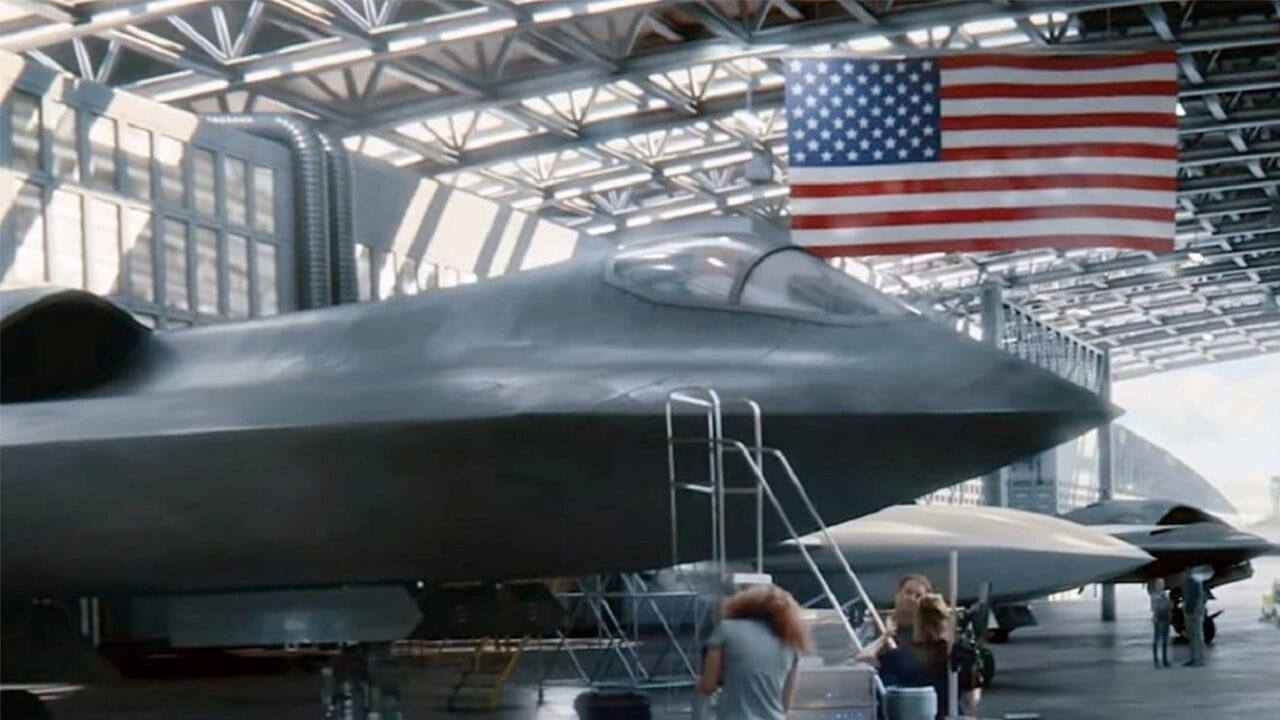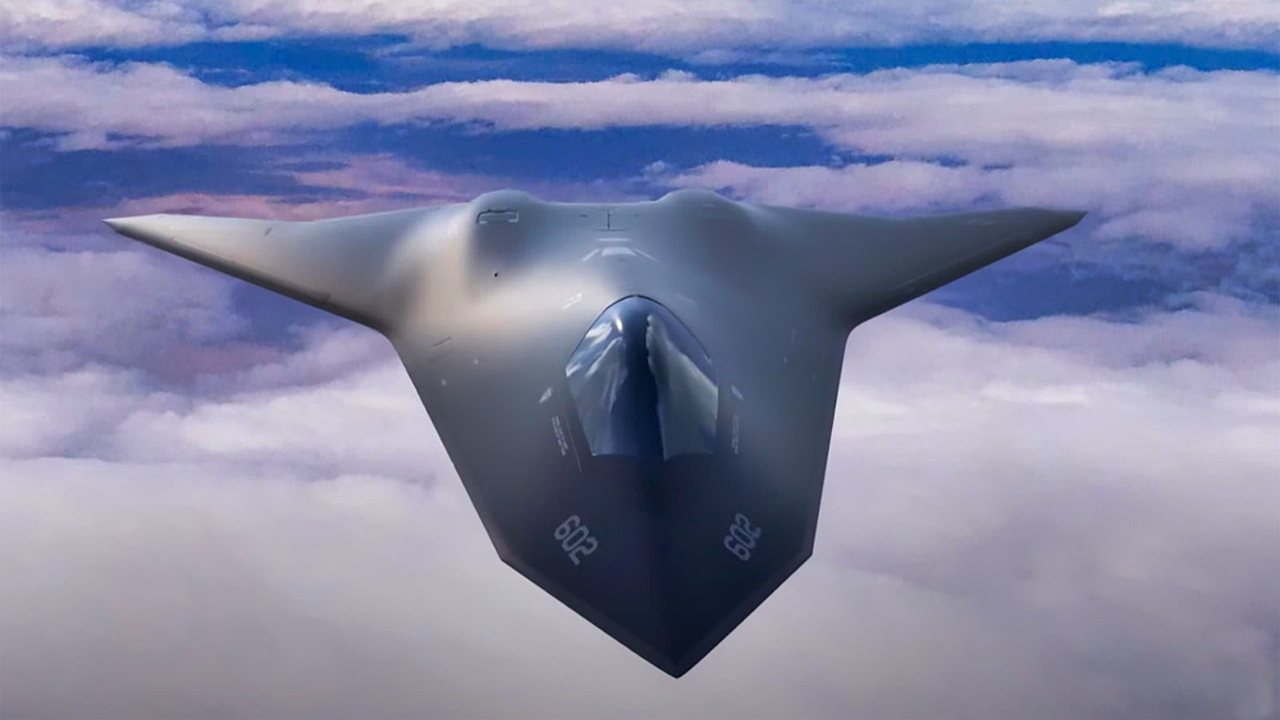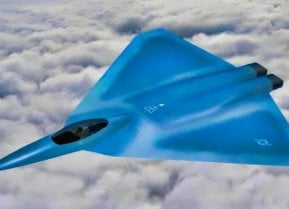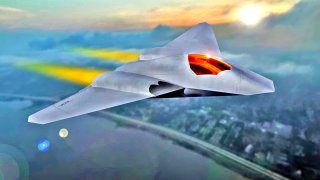NGAD: The $300 Million 6th Generation Fighter the Air Force Doesn't Need?
Designated the Next Generation Air Dominance (NGAD) program, the US sixth-generation project will, of course, be the most technologically advanced fighter platform ever built – and will likely be one of the most expensive, prompting questions about whether the US needs to invest so heavily, on the heels of the F-22, F-35, and B-21, in aerospace technology.
The United States was the first and remains one of the only nations in the world to field a fifth-generation fighter. Yet, bucking complacency and spurning defense investment, the US is already charging ahead with developing a sixth-generation fighter, which will likely be the world’s first ever.
Designated the Next Generation Air Dominance (NGAD) program, the US sixth-generation project will, of course, be the most technologically advanced fighter platform ever built – and will likely be one of the most expensive, prompting questions about whether the US needs to invest so heavily, on the heels of the F-22, F-35, and B-21, in aerospace technology.
NGAD: The Most Advanced Fighter Ever
The US already has the most advanced military aviation platforms in the world. The US fielded the world’s first ever fifth-generation fighter, the F-22, nearly thirty years ago. And in the decades since, only Russia and China have managed to field their own fifth-generation fighter (while only the US and China have managed to field fifth-generation fighters with any meaningful quantity).
Fifth-generation fighters, like the F-22, F-35, J-20, and Su-57, are the most advanced fighters ever developed – and lie far beyond what most nations on Earth can either develop, or compete against. So, for the time being, fifth-generation-holding nations are comfortably ahead of the curve – a position that was bought and paid for. Take the F-35, for example. The US has invested $1.7 trillion in the F-35 program – making the Joint Strike Fighter the single most expensive defense project in the history of warfare.
But the US, feeling pressure from her primary rivals Russia and China, are pressing to develop a fighter that can best any jet fielded anywhere, no questions asked.
The NGAD program began in 2014 and is expected to replace the F-22 Raptor, which even today remains the world’s preeminent air superiority fighter, and in certain respects remains the most remarkable airframe ever assembled. Yet, US designers are confident that they can top the F-22. What technology, exactly, the NGAD will feature remains unclear. But the NGAD is expected to have advanced digital capabilities, human-systems integration, variable cycle engines, increased range stand-off and BVR weapons, and possibly even laser weapons.
NGAD Worth the Cost? $300 Million Per Plane
How much will the NGAD program cost? Some reports say it could be $300 Million per fighter.
The exact numbers are not yet clear. But The Air Force allocated $1.66 billion for the NGAD program in FY23, while projections suggest that an additional $11.6 billion will be allocated to the NGAD between FY24 and FY27.

In sum, the program promises to cost taxpayers billions and billions of dollars, with each airframe costing “multiple hundreds of millions” of dollars as Secretary of the Air Force Frank Kendall admitted. So, is the NGAD’s exorbitant price tag worth it? That depends on your perspective.
If you accept the general premise of US foreign policy and the persistent standard of US defense spending, then the NGAD is probably a worthwhile and timely investment. Air defense technology is always improving, and hence, airframes must continuously be adapted.
The US is ahead of the curve at the moment, but the curve is catching up. Russia doesn’t have the resources to develop and field fighters on par with the US – but China, with immense latent economic potential and a seemingly motivated military-industrial complex, could possibly become an aerospace rival.

On the other hand, if you believe that the US’s defense budget (three times higher than China’s; ten times higher than Russia’s) is indulgently bloated and that taxpayers should not have to shoulder the costs of another brand-new, cutting-edge fighter jet, then you’re likely to find the NGAD investment superfluous.
And if you believe that US foreign policy is over-extended and over-involved, and that exorbitant defense spending facilitates that over-extended foreign policy, then again, you may not appreciate the NGAD investment.
About the Author
Harrison Kass is a defense and national security writer with over 1,000 total pieces on issues involving global affairs. An attorney, pilot, guitarist, and minor pro hockey player, Harrison joined the US Air Force as a Pilot Trainee but was medically discharged. Harrison holds a BA from Lake Forest College, a JD from the University of Oregon, and an MA from New York University. Harrison listens to Dokken.
Image Credit: Shutterstock.


